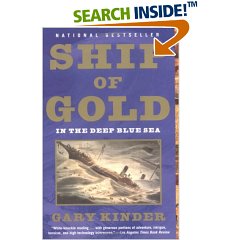Van Ransaeller refused to let go while Easton struggled to wrench free. Unable to shake off the chief mate, Ansel finally squirmed out of his coat, leaving the heavy garment in Van Ransaeller’s hands, and the poor man drifted away and drowned.
Although the legality of his act was not on Easton’s mind, common law precedent would support his actions.
Surely Ansel Easton was shaken. As he looked aboutm he saw desperate survivors clinging to floating deris, shouting encouragement to each other.
When Ansel spied “a large plank which had been the front of the berth,” he seized it. This would be his floating refuge for the next eight hours. He was in a semi-stupor, senses dulled, when lights appeared. Is this a ship? Was he seeing things?
He was not delirious. The Norweigian bark Ellen plucked him and 48 other survivors out of the sea. He was given dry clothing and Adeline said he “went to work assisting in caring for those who were saved and calling out the names of every one he knew, hoping to get a response” from any additional survivors in the water.
But there was no point looking for 44-year-old Captan Herndon. It was known by all that he had remained at the wheel of the ship just as he pledged he would. In the great tradition of the sea, Captain Herndon had gone down with his ship.
(Next Part 10)


